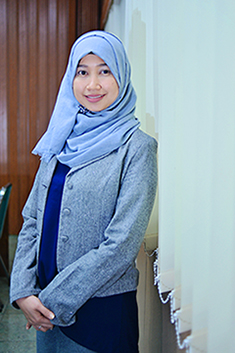Anti-Hepatitis C Virus Activity of Various Indonesian Plants from Balikpapan Botanical Garden, East Borneo
Downloads
Background: Hepatitis C Virus infection is a serious health problem that leads to chronic liver disease, liver cirrhosis, hepatocellular carcinoma, which causes high morbidity. Direct-Acting Antiviral Agents have been used as anti-hepatitis C Virus therapy. However, it was covered only in limited patients due to the high cost. Moreover, serious side effects and resistance cases were also reported in some HCV genotypes. Objective: This research aimed to find new anti-HCV from some Indonesia plants collected from Balikpapan Botanical Garden, East Borneo. Methods: Twenty-one leaf and stem barks extracts were successively extracted in n-hexane, dichloromethane, and methanol. Extracts were screened for their anti-HCV activity under in vitro culture cells in the concentration of 30 µg/mL. Plant extracts were inoculated in the Human Hepatocellular 7it and infected with HCV Japanese Fulminant Hepatitis strain 1a. Determination of 50% Inhibitory Concentration (IC50) value was further conducted at concentration of 100; 30; 10; 1; 0.1; 0.01 µg/ml of extracts. Results: In vitro anti-HCV activity revealed that among 21 plants extract, 11 extracts, namely, n-hexane extract from Luvunga scandens leaves, DCM extract from the leaf of L. scandens, Artocarpus sericicarpus, Artocarpus dadah, Eusideroxylon zwageri, Neolitsea cassiaefolia, methanol extract from A. sericicarpus and A. anisophyllus leaves, DCM extract from A. anisophyllus and A. elmeri stem bark, methanol extract from A. dadah stem bark, having potential inhibition with IC50 range 0.08 ± 0.05 to 12.01 ± 0.95 µg/mL. Conclusions: These results indicate that the eleven extracts could be good candidates as sources of anti-HCV agents.
Ashfaq, U. A. & Idrees, S. (2014). Medicinal Plants Against Hepatitis C Virus. World Journal of Gastroenterology; 20; 2941–2947. doi: 10.3748/wjg.v20.i11.2941.
Ashfaq, U. A, Masoud, M. S., Nawaz, Z. & Riazuddin, S. (2011). Glycyrrhizin as Antiviral Agent Against Hepatitis C Virus. Journal of Translational Medicine; 9; 1-7. doi: 10.1186/1479-5876-9-112.
Ashfaq, U. A., Javed, T., Rehman, S., Nawaz, Z. & Riazuddin, S. (2011). Inhibition of HCV 3a Core Gene Through Silymarin and Its Fractions. Virology Journal; 8; 1-7.
Calland, N., Dubuisson, J., Rouillé, Y. & Séron, K. (2012). Hepatitis C Virus and Natural Compounds: a New Antiviral Approach?. Viruses; 4; 2197–2217. doi: 10.3390/v4102197.
Ciesek, S., von Hahn, T., Colpitts, C. C., Schang, L. M., Friesland, M., Steinmann, J., Manns, M. P., Ott, M., Wedemeyer, H., Meuleman, P., Pietschmann, T. & Steinmann, E. (2011). The Green Tea Polyphenol, Epigallocatechin-3-Gallate, Inhibits Hepatitis C Virus Entry. Hepatology (Baltimore, Md.); 54; 1947–1955. doi: 10.1002/hep.24610.
De Almeida, A. P., Miranda, M. M. F. S., Simoni, I. C., Wigg, M. D., Lagrota, M. H. C. & Costa, S. S. (1998). Flavonol Monoglycosides Isolated from the Antiviral Fractions of Persea americana (Lauraceae) Leaf Infusion. Phytotherapy Research; 12; 562–567. doi: 10.1002/(SICI)1099-1573(199812)12:8<562::AID PTR356>3.0.CO;2-6.
Gonzalez, O., Fontanes, V., Raychaudhuri, S., Loo, R., Loo, J., Arumugaswami, V., Sun, R., Dasgupta, A. & French, S. W. (2009). The Heat Shock Protein Inhibitor Quercetin Attenuates Hepatitis C Virus Production. Hepatology (Baltimore, Md.); 50; 1756–1764. doi: 10.1002/hep.23232.
Hafid, A. F., Aoki-Utsubo, C., Permanasari, A. A., Adianti, M., Tumewu, L., Widyawaruyanti, A., Wahyuningsih, S. P. A., Wahyuni, T. S., Lusida, M. I., Soetjipto & Hotta, H. (2017). Antiviral Activity of the Dichloromethane Extracts from Artocarpus heterophyllus Leaves Against Hepatitis C Virus. Asian Pacific Journal of Tropical Biomedicine; 7; 633–639. doi: 10.1016/j.apjtb.2017.06.003.
Hafid, A. F., Puliansari, N., Lestari, N. S., Tumewu, L., Rahman, A. & Widyawaruyanti, A. (2017). Skrining Aktivitas Antimalaria Beberapa Tanaman Indonesia Hasil Eksplorasi dari Hutan Raya Cangar, Batu-Malang, Jawa Timur. Jurnal Farmasi Dan Ilmu Kefarmasian Indonesia; 3; 7-11. doi: 10.20473/jfiki.v3i12016.7-11.
Haid, S., Novodomská, A., Gentzsch, J., Grethe, C., Geuenich, S., Bankwitz, D., Chhatwal, P., Jannack, B., Hennebelle, T., Bailleul, F., Keppler, O. T., Poenisch, M., Bartenschlager, R., Hernandez, C., Lemasson, M., Rosenberg, A. R., Wong-Staal, F., Davioud-Charvet, E., & Pietschmann, T. (2012). A Plant-Derived Flavonoid Inhibits Entry of All HCV Genotypes Into Human Hepatocytes. Gastroenterology; 143; 213-222e5. doi: 10.1053/j.gastro.2012.03.036.
Hajarizadeh, B., Grebely, J. & Dore, G. J. (2013). Epidemiology and Natural History of HCV Infection. Nature Reviews. Gastroenterology & Hepatology; 10; 553–562. doi: 10.1038/nrgastro.2013.107
Hussein, G., Miyashiro, H., Nakamura, N., Hattori, M., Kakiuchi, N. & Shimotohno, K. (2000). Inhibitory Effects of Sudanese Medicinal Plant Extracts on Hepatitis C Virus (HCV) Protease. Phytotherapy Research: PTR; 14; 510–516. doi: 10.1002/1099-1573(200011)14:7<510::aid-ptr646>3.0.co;2-b.
Jonathan, S., Jack, W. & Suzanne, W. (2018). Situation Analysis of Viral Hepatitis in Indonesia : A Policy Report. Coalition Eradicate Viral Hepatitis in Asia Pacific (CEVHAP); 3; 1-23.
Mariani, Y., Yusro, F. & Wardenaar, E. (2020). Aktivitas Ekstrak Metanol Daun Ulin (Eusideroxylon zwageri Teijsm & Binn) Terhadap Empat Jenis Bakteri Patogen. Jurnal Biologi Tropis; 20; 94–101. doi: 10.29303/jbt.v20i1.1642.
Morozov, V. A. & Lagaye, S. (2018). Hepatitis C Virus: Morphogenesis, Infection and Therapy. World Journal of Hepatology; 10; 186–212. doi: 10.4254/wjh.v10.i2.186.
Nahmias, Y., Goldwasser, J., Casali, M., van Poll, D., Wakita, T., Chung, R. T. & Yarmush, M. L. (2008). Apolipoprotein B-dependent Hepatitis C Virus Secretion is Inhibited by the Grapefruit Flavonoid Naringenin. Hepatology (Baltimore, Md.); 47; 1437–1445. doi: 10.1002/hep.22197.
Polyak, S. J., Morishima, C., Shuhart, M. C., Wang, C. C., Liu, Y. & Lee, D. Y.-W. (2007). Inhibition of T-cell Inflammatory Cytokines, Hepatocyte NF-kappaB Signaling, and HCV Infection by Standardized Silymarin. Gastroenterology; 132; 1925–1936. doi: 10.1053/j.gastro.2007.02.038.
Radulović, N. S., Blagojević, P. D., Stojanović-Radić, Z. Z. & Stojanović, N. M. (2013). Antimicrobial Plant Metabolites: Structural Diversity and Mechanism of Action. Current Medicinal Chemistry; 20; 932–952.
Sirinut, P., Petchkongkeaw, A., Romsaiyud, J., Prateeptongkum, S. & Thongyoo, P. (2017). Phytochemical Constituents from the Root of Luvunga Scandens and Biological Activity Evaluation. Natural Product Communications; 12; 1483-1484. doi: 10.1177/1934578X1701200926.
Wagoner, J., Morishima, C., Graf, T. N., Oberlies, N. H., Teissier, E., Pécheur, E.-I., Tavis, J. E. & Polyak, S. J. (2011). Differential In Vitro Effects of Intravenous Versus Oral Formulations of Silibinin on the HCV Life Cycle and Inflammation. PloS One; 6; 1-9. doi: 10.1371/journal.pone.0016464.
Wahyuni, T. S., Tumewu, L., Permanasari, A. A., Apriani, E., Adianti, M., Rahman, A., Widyawaruyanti, A., Lusida, M. I., Fuad, A., Soetjipto, Nasronudin, Fuchino, H., Kawahara, N., Shoji, I., Deng, L., Aoki, C. & Hotta, H. (2013). Antiviral Activities of Indonesian Medicinal Plants in the East Java region Against Hepatitis C Virus. Virology Journal; 10; 1-9. doi: 10.1186/1743-422X-10-259.
Wahyuni, T. S., Utsubo, C. A. & Hotta, H. (2016). Promising Anti-Hepatitis C Virus Compounds from Natural Resources. Natural Product Communications; 11; 1193-1200.
Wahyuni, T. S., Widyawaruyanti, A., Lusida, M. I., Fuad, A., Soetjipto, Fuchino, H., Kawahara, N., Hayashi, Y., Aoki, C. & Hotta, H. (2014). Inhibition of Hepatitis C Virus Replication by Chalepin and Pseudane IX Isolated from Ruta angustifolia Leaves. Fitoterapia; 99; 276–283. doi: 10.1016/j.fitote.2014.10.011.
Wang, Y. -J., Pan, K. -L., Hsieh, T. -C., Chang, T. -Y., Lin, W. -H. & Hsu, J. T. -A. (2011). Diosgenin, a Plant-Derived Sapogenin, Exhibits Antiviral Activity In Vitro Against Hepatitis C Virus. Journal of Natural Products; 74; 580–584. doi: 10.1021/np100578u.
Wetprasit, N., Threesangsri, W., Klamklai, N. & Chulavatnatol, M. (2000). Jackfruit Lectin: Properties of Mitogenicity and the Inhibition of Herpesvirus Infection. Japanese Journal of Infectious Diseases; 53; 156–161.
Wila, H., Yusro, F. & Mariani, Y. (2018). Skrining Fitokimia dan Aktivitas Antibakteri Ekstrak Kulit Batang (Eusideroxylon zwageri) terhadap Escherichia coli dan Salmonella typhi. Jurnal Tengkawang; 8; 38-49. doi: 10.26418/jt.v8i1.30147.
World Health Organization (WHO). (2019). Hepatitis C. https://www.who.int/news-room/fact-sheets/detail/hepatitis-c. Accessed: 21 April 2021.
Zhang, L., Li, M. -Y., Wang, L. -W., Gao, J. & Ma, C. -M. (2013). Isolation, Identification, Quantification and Inhibitory Activity on HCV Protease of Coumarins from Viola yedoensis. Canadian Chemical Transactions; 1; 157–164. doi: 10.13179/canchemtrans.2013.01.03.0025.
Copyright (c) 2022 JURNAL FARMASI DAN ILMU KEFARMASIAN INDONESIA

This work is licensed under a Creative Commons Attribution-NonCommercial-ShareAlike 4.0 International License.
1. The copyright of this journal belongs to the Editorial Board and Journal Manager with the author's knowledge, while the moral right of the publication belong to the author.
2. The formal legal aspect of journal publication accessibility refers to the Creative Commons Attribution-Non-Commercial-Share Alike (CC BY-NC-SA), which implies that the publication can be used for non-commercial purposes in its original form.
3. Every publication (print/electronic) is open access for educational, research, and library purposes. In addition to the objectives mentioned above, the editorial board is not responsible for copyright infringement


.jpg)















